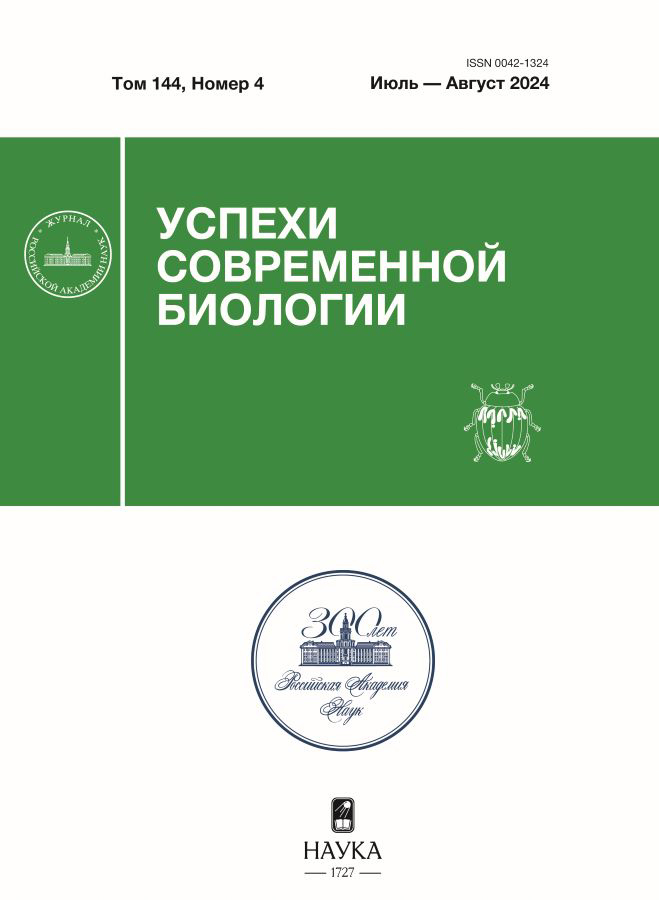Structural changes of lung tissues in the dynamics of inhalation poisoning with carbonic acid dichlorohydride
- 作者: Torkunov P.A.1, Chepur S.V.2, Shabanov P.D.1, Zemlyanoy A.V.3, Torkunova O.V.4
-
隶属关系:
- Kirov Military Medical Academy
- State Research Testing Institute of Military Medicine
- Scientific Research Institute of Hygiene, Occupational Pathology and Human Ecology
- State Pediatric Medical University
- 期: 卷 144, 编号 4 (2024)
- 页面: 424-434
- 栏目: Articles
- ##submission.dateSubmitted##: 02.02.2025
- ##submission.datePublished##: 22.07.2024
- URL: https://rjdentistry.com/0042-1324/article/view/653190
- DOI: https://doi.org/10.31857/S0042132424040056
- EDN: https://elibrary.ru/PPHUGP
- ID: 653190
如何引用文章
详细
A study of structural changes in lung tissue during the formation of organ edema due to inhalation of a lipotropic poison, carbonic acid dichloride, showed the peculiarities of the formation of acute respiratory distress syndrome. The point of application of the poison is the distal bronchioles, the epithelium of which is subject to dystrophic and necrotic changes followed by goblet metaplasia. The absorbed poison causes pronounced changes in blood microcirculation, steroid-resistant NO-mediated endothelial dysfunction with blood deposition in dilated capillaries, aggregation and lysis of erythrocytes. Changes in the vascular bed in the interalveolar septa precede the formation of an acute inflammatory reaction with the accumulation of alveolar effusion and dystrophic changes in the alveolar epithelium with cell desquamation. Among the cells of the alveolar lining, type II alveolocytes are the most vulnerable. Plasma permeation of the connective tissue of the interalveolar septa interstitium is accompanied by their infiltration with polymorphonuclear leukocytes and activation of macrophages. Desquamation of epithelial cells of the distal bronchioles leads to obstruction of their lumens and, through the valve mechanism, contributes to overextension of the alveoli with the formation of emphysema and reduction of capillary blood circulation in the alveolar septa. The observed changes determined the directions for improving the treatment of poisoning by asphyxiating poisons.
全文:
作者简介
P. Torkunov
Kirov Military Medical Academy
编辑信件的主要联系方式.
Email: tpa4@mail.ru
俄罗斯联邦, St. Petersburg
S. Chepur
State Research Testing Institute of Military Medicine
Email: tpa4@mail.ru
俄罗斯联邦, St. Petersburg
P. Shabanov
Kirov Military Medical Academy
Email: tpa4@mail.ru
俄罗斯联邦, St. Petersburg
A. Zemlyanoy
Scientific Research Institute of Hygiene, Occupational Pathology and Human Ecology
Email: tpa4@mail.ru
俄罗斯联邦, Kuzmolovsky settlement, Leningrad Region
O. Torkunova
State Pediatric Medical University
Email: tpa4@mail.ru
俄罗斯联邦, St. Petersburg
参考
- Зильбер А.П. Респираторная медицина (этюды критической медицины). Петрозаводск: ПетрГУ, 1996. Т. 2. 488 с.
- Меркулов Г.А. Курс патогистологической техники. Л.: Медицина, 1969. 424 с.
- Мотавкин П.А., Гельцер Б.И. Клиническая и экспериментальная патофизиология легких. М.: Наука, 1998. 366 с.
- Сотников О.С. Динамика структуры живого нейрона. Л.: Наука, 1985. 160 с.
- Толкач П.Г. Изучение механизма токсического действия дихлорангидрида угольной кислоты // Токсикол. вестн. 2020. № 3 (162). С. 26–32.
- Толкач П.Г., Башарин В.А., Чепур С.В. и др. Ультраструктурные изменения аэрогематического барьера крыс при острой интоксикации продуктами пиролиза фторопласта // Бюл. эксп. биол. мед. 2020. Т. 169 (2). С. 235–241.
- Торкунов П.А., Шабанов П.Д., Земляной А.В. Фармакологическая коррекция токсического отека легких. СПб.: Элби-СПб., 2008. 176 с.
- Чучалин А.Г. Отек легких: физиология легочного кровообращения и патофизиология отека легких // Пульмонология. 2005. № 4. С. 9–18.
- Aggarwal S., Jilling T., Doran S. et al. Phosgene inhalation causes hemolysis and acute lung injury // Toxicol. Lett. 2019. V. 312. P. 204–213. https://doi.org/10.1016/j.toxlet.2019.04.019
- Cao C., Zhang L., Shen J. Phosgene-induced acute lung injury: approaches for mechanism-based treatment strategies // Front. Immunol. 2022. V. 13. P. 917395. https://doi.org/10.3389/fimmu.2022.917395
- Chaudhuri D., Sasaki K., Karhar A. et al. Corticosteroids in COVID-19 and non-COVID-19 ARDS: a systematic review and meta-analysis // Intensive Care Med. 2021. V. 47. P. 521–537. https://doi.org/10.1007/s00134-021-06394-2
- He D.-K., Xu N., Shao Y.-R., Shen J. NLRP3 gene silencing ameliorates phosgene-induced acute lung injury in rats by inhibiting NLRP3 inflammasome and proinflammatory factors, but not anti-inflammatory factors // J. Toxicol. Sci. 2020. V. 45 (10). P. 625–637. https://doi.org/10.2131/jts.45.625
- Lu Q., Huang S., Meng X. et al. Mechanism of phosgene-induced acute lung injury and treatment strategy // Int. J. Mol. Sci. 2021. V. 22. P. 10933. https://doi.org/10.3390/ijms222010933
- Pauluhn J. Phosgene inhalation toxicity: update on mechanisms and mechanism-based treatment strategies // Toxicology. 2021. V. 450. P. 152682. https://doi.org/10.1016/j.tox.2021.152682
- Pauluhn J. Derivation of thresholds for inhaled chemically reactive irritants: searching for substance-specific common denominators for read-across prediction // Regul. Toxicol. Pharmacol. 2022. V. 130. P. 105131. https://doi.org/10.1016/j.yrtph.2022.105131
- Radbel J., Laskin D.L., Laskin J.D., Kipen H.M. Disease-modifying treatment of chemical threat agent-induced acute lung injury // Ann. N.Y. Acad. Sci. 2020. V. 1480 (1). P. 14–29. https://doi.org/10.1111/nyas.14438
- Shao Y., Jiang Z., He D., Shen J. NEDD4 attenuates phosgene-induced acute lung injury through the inhibition of Notch1 activation // J. Cell. Mol. Med. 2022. V. 26 (10). P. 2831–2840. https://doi.org/10.1111/jcmm.17296
- Tiwari R.R., Raghavan S. Chronic low-dose exposure to highly toxic gas phosgene and its effect on peak expiratory flow rate // Indian J. Occup. Environ. Med. 2022. V. 26 (3). P. 189–192. https://doi.org/10.4103/ijoem.ijoem_417_20
补充文件












